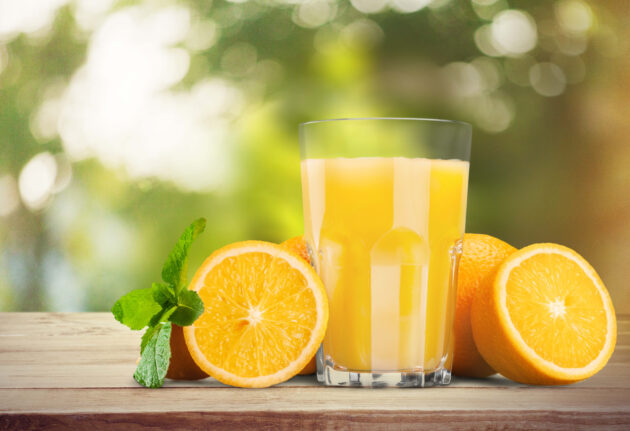
Efficiency key as juice producers squeezed
By Matt Hale
Processing Fruit & Vegetables HRS Heat Ex Orange juice producers currently face raw material challenges and rising costs. Photo courtesy HRS Heat Exchangers
Orange juice producers currently face raw material challenges and rising costs. Photo courtesy HRS Heat Exchangers Orange juice remains one of the most popular soft drinks around the world, but challenging weather conditions in 2021 and 2022 in the world’s major production regions of Brazil and Florida respectively mean that the supply chain faces record raw material costs. As a result, producers will need to focus more than ever on production efficiencies to maximize margins.
The good news is that the demand for orange juice remains high, despite consumers in some markets, such as Europe, moving away from fruit juices and related products as they are perceived to be relatively high in sugar and calories. This fall in demand has been compensated for by increasing demand from food processors for the production of smoothies and flavoured water, which are generally perceived as healthier choices. Demand for straight orange juice also received a significant boost from the COVID pandemic around the world. Overall, most analysts predict level, or slightly increased worldwide demand for the next few years.
Production challenges
The trouble for the industry is that despite this buoyant demand, the last couple of years have seen reduced fruit output from the major production areas of Brazil and Florida. Other less important producers are also struggling, with European production also down this year, in line with a longer-term trend.
Brazil, the world’s largest grower of citrus fruit, suffered significant frosts and droughts during the 2021 growing season, but production is projected to bounce back by 20.5 per cent to 317 million boxes for the 2022/23 season. However, the final effects of a warmer winter season, which saw higher than normal levels of fruit drop, still have to be assessed. At the same time, lower-than-normal stocks from 2021/22 have kept local prices high (up to 50 per cent higher in July 2022 compared with the previous year).
In contrast, production from Florida (the second largest producer of citrus in the world) is estimated to fall 51 per cent for the 2022/23 season to just 20 million boxes. This represents the largest fall in production in 110 years. The reasons for Florida’s reduced production are related not just to weather (orange groves have suffered damage from hurricanes, frosts and insect damage), but also to citrus greening disease, a bacterium which causes fruit to shrivel and fall from the tree before it is ripe. The number of Valencia orange trees in Florida has also fallen from 36 million in 2006 to just 30 million today as real estate and land prices in the state persuade many growers to cash in the value of their land.
Difficult markets
It’s no wonder markets are nervous, with orange juice futures matching historical highs in New York at the end of 2022 with increases of 50 per cent or more compared to the previous year. According to some estimates, U.S. orange juice production alone will fall 6.5 per cent to 215,000 tonnes for the current year, although stocks of juice are expected to remain stable.
All of these factors mean orange juice producers, whether using concentrate or frozen not-from-concentrate (NFC) juice, face an increase in raw material costs of around 50 per cent. Add this to the global energy crisis following Russia’s invasion of Ukraine, which saw energy prices rise as much as 60 per cent for oil and 400 per cent for natural gas in Europe (although prices at the start of 2023 were much closer to pre-invasion levels), and producers are in the front line of food inflation.
Faced with unavoidable rises in input costs, not all of which can be passed on to customers or consumers, manufacturers must make every effort to maximize the efficiency of processes such as remelting and pasteurization. At the same time, they need to maintain the key quality characteristics of the juice, even though chemical changes begin as soon as the juice is squeezed.
Pasteurization options
Thermal treatment, sometimes known as ‘flash pasteurization,’ is the preferred technique for making premium juice. However, flash pasteurization takes time to evenly heat the product, adding to the total processing time and increasing the risk of altering the product’s organoleptic properties. In contrast, ohmic heating, which uses electricity to heat the product rapidly and uniformly, has been scientifically shown to be highly effective while maintaining flavours and quality.
Matt Hale is the international sales and marketing director at HRS Heat Exchangers.
Print this page